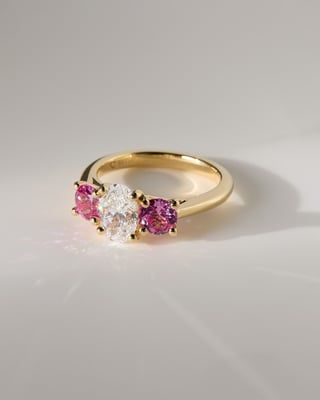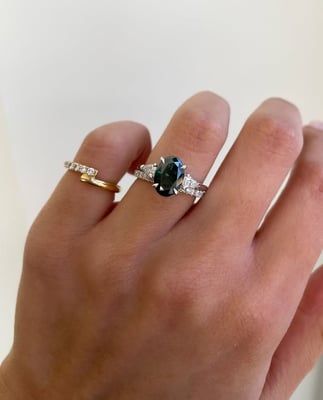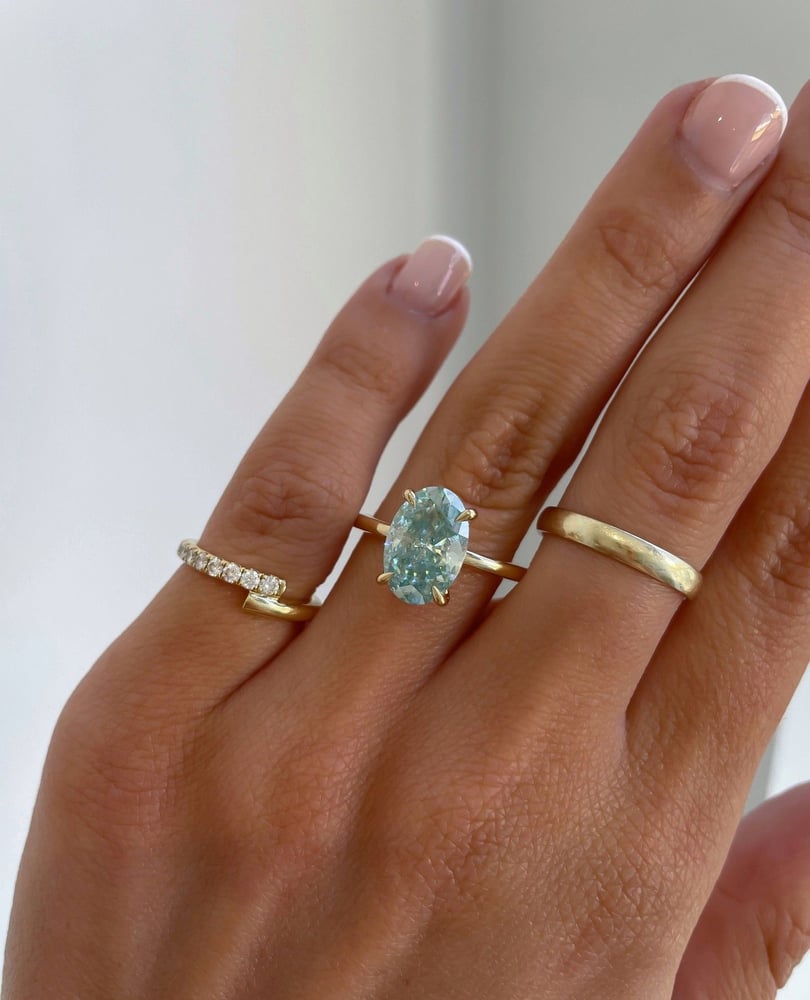
Emerald rings are fast becoming popular as individuality and the use of fun-coloured gemstones in engagement rings and fine jewellery increase. While diamonds and lab-grown alternatives are still the most popular centre stones of choice, how do emeralds fare in popularity—and do they match the durability of diamonds? Read on to find out.
Is an emerald a good choice for an engagement ring?
The new trend of engagement rings that don’t follow a typical cookie-cutter perception of engagement rings is excellent news for all the coloured gemstones, including gorgeous green emeralds. Mined emeralds do rank lower on the Mohs hardness scale than diamonds (at a 7.5-8). Though this might feel scarily low, it simply means avoiding any strenuous activity with your engagement ring on if you do wish to wear your ring at all times. Otherwise, our coloured lab-grown moissanite ranks a 9 on the scale, and you can still enjoy the bright beautiful glow of a green centre stone.


Which is more expensive – emeralds or diamonds?
If you’re choosing between mined emeralds and diamonds, emeralds are cheaper. This is great news, particularly if you plan to have a large centre stone. The stone density of emeralds is lower than that of diamonds, so a one-carat emerald will look bigger than the equivalent diamond.
Emeralds are also good news if you’re looking for a big ring. The stone's density is lower than diamonds, so a one-carat emerald will look bigger than a one-carat diamond. It’s important to note that while emeralds might be cheaper than diamonds if you’re looking for high-quality emeralds, you’ll still pay a pretty penny, as emeralds generally have internal marks.
What is the link between an emerald and emerald cut?
The emerald cut began as a way to cut mined emeralds. The stones have a moderate rating on the Mohs hardness scale and generally include lots of internal blemishes, meaning cutting them can be risky. The technique of cutting emeralds in the emerald cut was developed to decrease the risk of breaking or chipping off this fairly fragile stone. Mined emeralds form in long crystals, so cutting them with the long emerald-cut edges minimises that risk.
While the emerald cut is certainly chic and appears in the engagement rings of the likes of Amal Clooney and Beyonce, it does have its drawbacks. The nature of the cut means it won’t sparkle as brightly as, say, a radiant cut engagement ring, so if it’s important that your engagement ring shines from a mile away, maybe avoid this cut.
Do lab-grown emeralds exist?
While mined emeralds have their own charm, they have many internal blemishes (called inclusions in the gemstone world), and the mining of the stones is as environmentally detrimental as diamond mining. For a blemish-free emerald that you can have a clear conscience about, look no further than our green lab-grown moissanite engagement rings. We have two shades – Clover Green and Seafoam Green. Clover Green is a true bright, bold jewel-toned green, while Seafoam is almost an optical illusion, changing from green to white according to the light. Both are available in our Emerald Cut centre stone with 57 faces for a perfect sparkly, sophisticated engagement ring.
Our moissanite stones have a clarity grading of VVS1-VVS2 (very, very slight inclusions). Compared to mined emeralds, which are hugely more expensive and can severely vary in quality, it makes the decision to consider a lab-grown alternative a no-brainer.

There are plenty of things to consider when choosing a unique gemstone for an engagement ring, though with our options of lab grown alternatives, you don’t need to compromise on quality or durability. To speak to us in more detail about building the engagement ring of your dreams – get in touch here.